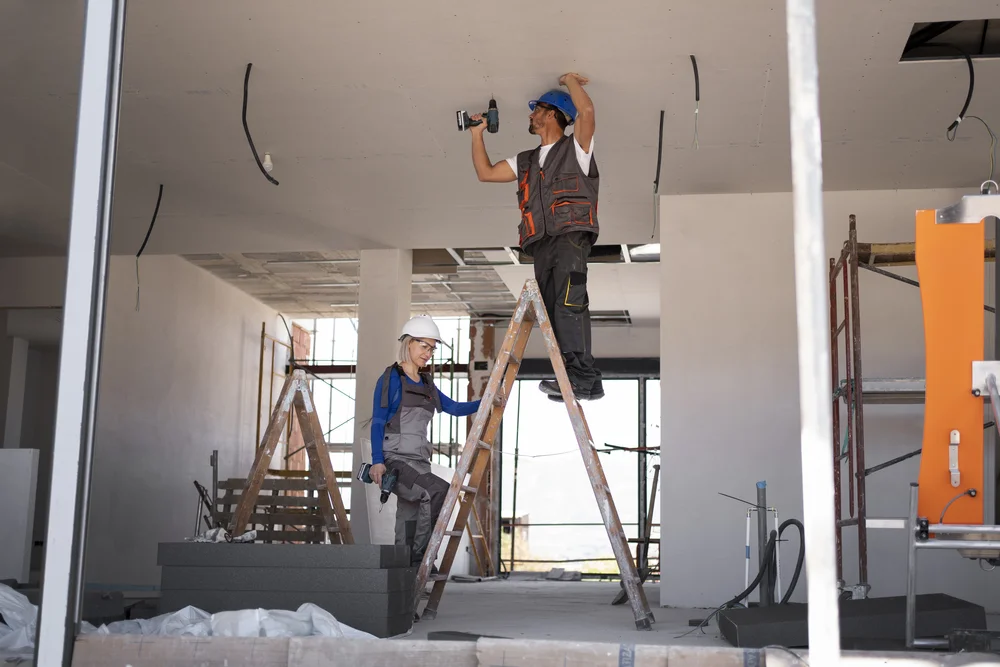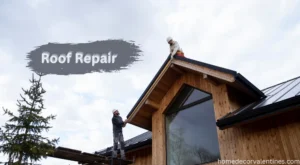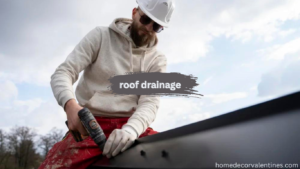Upgrade Your Roof Drainage for Better Protection
Roof drainage refers to efficiently channelling rainwater away from your roof, preventing it from pooling or causing damage to your home’s exterior and interior. A well-designed drainage system ensures that water flows safely away from your property, protecting it from potential water-related issues.
The Importance of Proper Roof Drainage
Proper roof drainage is essential for several reasons. Firstly, it helps prevent water damage to your home’s foundation, walls, and ceilings. When water accumulates on the roof or near the foundation, it can seep into the structure, leading to leaks, mould growth, and structural deterioration.
Secondly, a functional drainage system protects the structural integrity of your roof. Excess water weight on the roof can weaken its structure and lead to sagging or even collapse in extreme cases. Ensuring efficient water runoff reduces the risk of such structural damage.
Signs of Poor Roof Drainage
Recognizing signs of poor roof drainage is crucial for addressing issues promptly. Water stains on ceilings or walls indicate possible leaks or seepage, especially after rain. Additionally, mold and mildew growth in damp areas can signal excess moisture due to poor drainage.
Water Stains on Ceilings and Walls
One of the primary signs of inadequate roof drainage is water stains on ceilings and walls. These stains often appear after rain showers and can indicate roof drainage issues causing water seepage.
Mold and Mildew Growth
Poor roof drainag can create moist environments conducive to mould and mildew growth. Areas affected by inadequate roof drainage may experience persistent dampness, leading to the development of mold and mildew.
Gutter Overflow
When gutters fail to efficiently manage water flow, they can overflow, spilling water down the sides of the house. This gutter overflow is a visible sign of compromised roof drainage.
Pooled Water Around the Foundation
Improper roof drainage can result in water pooling around the house’s foundation. This pooling water can weaken the foundation, highlighting the importance of effective systems.
Sagging or Warped Roof
Excessive water accumulation due to poor roof drainage can exert extra weight on the roof structure, leading to sagging or warping. These structural changes are often a result of long-term issues.
Factors That Affect Roof Drainage
Several factors influence the effectiveness of roof drainage. The roof pitch and slope determine how quickly water can flow off the roof. Steeper pitches typically facilitate faster drainage compared to flatter roofs. Gutter size and material also play a role, with more oversized gutters and durable materials like aluminium or copper offering better performance.
Climate and weather conditions, such as heavy rainfall or snowmelt, can overload drainage systems. It’s essential to consider these factors when designing or upgrading your roof drainage system to ensure optimal functionality.
Upgrading Your Gutter System: Options and Benefits
Upgrading your gutter system can significantly improve roof drainage. Options like seamless gutters reduce the risk of leaks and clogs, ensuring smooth water flow. Gutter guards can prevent debris buildup, minimizing maintenance needs. Proper downspout placement directs water away from the foundation, protecting it from water damage.
Other Ways to Improve Roof Drainage
Other methods can enhance roof drainage in addition to upgrading gutters. Installing French drains redirects water away from the house, preventing water accumulation. Creating rain gardens absorbs excess water and adds aesthetic value to your landscape. Sloping landscaping away from the house encourages water runoff and reduces pooling near the foundation.
Tips for Maintaining a Functional Roof Drainage System
Regular maintenance is critical to a functional roof drainage system. Schedule routine gutter cleaning to remove debris and prevent clogs. Inspect gutters and downspouts for leaks or damage, repairing them promptly. Trim overhanging branches to prevent debris buildup and ensure unobstructed water flow. Here are some tips for maintaining a functional roof drainage system:
Regular Gutter Cleaning
Schedule regular cleanings to remove debris such as leaves, twigs, and dirt from your gutters. Clogged gutters can impede water flow and lead to overflow, causing potential water damage.
Inspect for Leaks and Damage
Periodically inspect your gutters, downspouts, and roof for any signs of leaks or damage. Repair any cracks, holes, or loose components promptly to prevent water from escaping where it shouldn’t.
Trim Overhanging Branches
Trim tree branches that overhang your roof to prevent them from dropping leaves or debris into the gutters. This helps maintain clear gutters and reduces the risk of clogs.
Check Downspout Placement
Ensure that downspouts are directing water away from the foundation of your home. Extend downspouts to divert water at least several feet away from the house to prevent foundation damage.
Install Gutter Guards:
Consider installing gutter guards to prevent debris from entering and clogging your gutters. These guards allow water to flow through while blocking leaves and other debris, reducing maintenance needs.
Monitor Roof Pitch and Slope
Be aware of your roof’s pitch and slope as they influence water runoff. Ensure your roof is designed to facilitate proper drainage, with water flowing away from the roof rather than pooling on its surface.
Inspect Seals and Joints
Check the seals and joints of your gutter system for signs of wear or deterioration. Replace any damaged seals or reseal joints to maintain a watertight gutter system.
Consider Professional Maintenance
For thorough inspections and maintenance, consider hiring a professional roofing contractor. They can identify potential issues early and perform repairs or upgrades to optimize your roof drainage system.
Conclusion
Proper roof drainage is essential for protecting your home from water damage and maintaining its structural integrity. You can ensure a dry and healthy home environment by understanding the importance of efficient drainage, recognizing signs of poor drainage, addressing contributing factors, and implementing upgrades and maintenance tips.
Share this content:














Post Comment